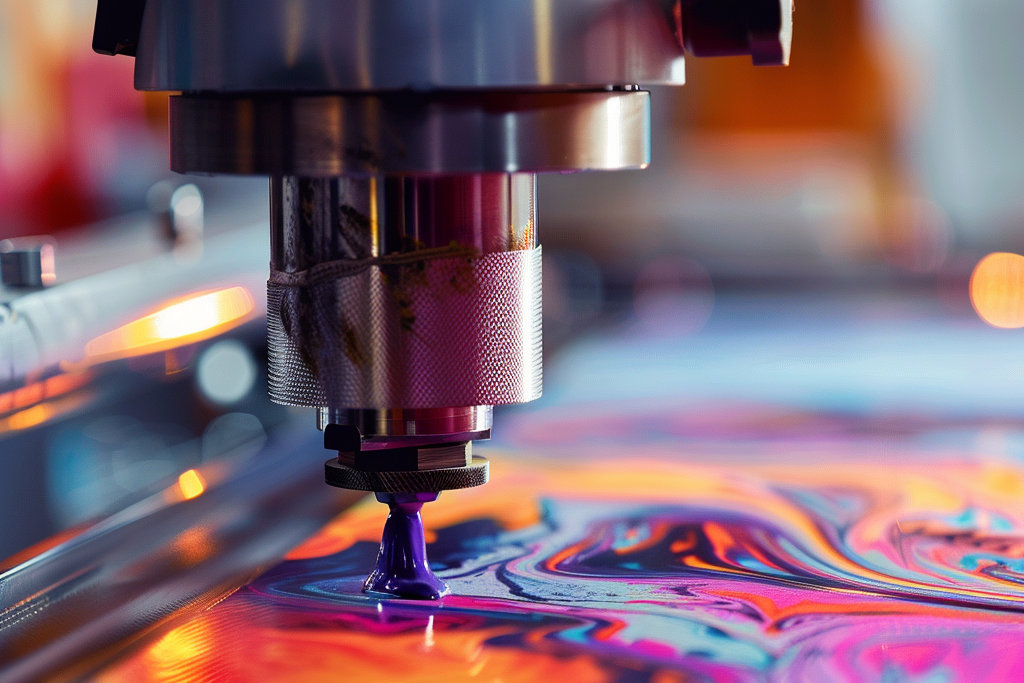Sublimation is a term you may have encountered, especially in the world of printing and textiles. It’s often described as a revolutionary technique, but what exactly does it mean?
Sublimation1 is the process of converting a substance directly from a solid to a gas, used in printing to transfer dyes onto materials like fabrics or ceramics without turning into liquid first.
This method has gained popularity for its vibrant results and durable finishes. Let’s explore its applications and benefits in detail.
What is sublimation in printing?
Sublimation printing2 has become a game-changer for customizing products. But how does it actually work?
Sublimation printing is a digital process where heat and pressure turn dye into a gas, bonding it to polyester or coated surfaces to create vibrant, lasting designs.
Here’s why it’s so effective.

How Sublimation Printing Works
- Design Creation: The process starts with a digital design created using software.
- Printing: The design is printed onto special sublimation paper using sublimation ink.
- Heat Transfer: Heat and pressure are applied to transfer the ink as a gas onto the substrate, usually polyester or a polymer-coated material.
Advantages of Sublimation Printing
- Durable Prints: The ink becomes part of the material, resisting fading or peeling.
- High-Quality Colors: Sublimation delivers vivid, sharp images.
- Versatility: Works on mugs, phone cases, and fabrics.
However, sublimation is limited to light-colored and polyester-based materials, which may not fit every project.
What is sublimation in clothing?
Sublimation in clothing3 has transformed the industry, offering innovative ways to create unique apparel designs.
In clothing, sublimation printing is used to embed designs into polyester fabrics, ensuring vibrant colors that won’t crack or fade over time.
Let’s dive deeper into its applications.
Sublimation and Fabric Types
Sublimation works best on polyester or high-polyester blends. Unlike traditional methods, it dyes the fibers instead of adding a layer on top. This makes the designs:
- Soft to the touch: There’s no added texture.
- Long-lasting: The colors won’t peel or fade.
- Wash-resistant: Ideal for activewear and sports gear.
| Fabric Type | Sublimation Compatibility | Notes |
|---|---|---|
| 100% Polyester | Excellent | Best results with vibrant colors |
| Polyester Blends | Good | Slightly muted colors |
| Cotton | Not Compatible | Requires a special coating |
Popular Uses in Fashion
Sublimation is widely used for:
- Custom t-shirts: Perfect for branding or artwork.
- Sports uniforms: Vibrant, durable designs for active use.
- Fashion lines: Unique patterns without fabric limitations.
This process combines aesthetics with practicality, making it a favorite in modern fashion.

Can I use my printer for sublimation?
You might wonder if it’s possible to start sublimation printing with a standard printer.
Printer compatibility for sublimation4 is crucial. You need a printer designed for sublimation ink or one that can be converted for this purpose.
Let’s break down what you’ll need.
Sublimation-Ready Printers
Printers like Epson EcoTank or Sawgrass are built for sublimation. They:
- Support sublimation ink without modification.
- Deliver consistent, high-quality results.
Converting a Standard Printer
Some inkjet printers, like specific Epson models, can be converted for sublimation. This involves:
- Replacing standard ink with sublimation ink.
- Using sublimation paper for printing designs.
- Following specific maintenance guidelines to avoid clogs.
Challenges with Regular Printers
Attempting sublimation with incompatible printers often results in:
- Poor print quality.
- Ink clogs and printer damage.
- Limited warranty support from manufacturers.
Investing in the right equipment is essential to avoid these pitfalls and achieve professional results.
Is sublimation printing better than vinyl?
When choosing a printing method, comparing sublimation and vinyl5 can help determine what works best for your needs.
Sublimation is better than vinyl for long-lasting, vibrant, and seamless designs, but vinyl may be more versatile for diverse fabrics and textures.
Let’s examine the pros and cons of each.
Sublimation vs. Vinyl: Key Differences
| Feature | Sublimation | Vinyl |
|---|---|---|
| Durability | Embedded in fabric | Can peel over time |
| Color Quality | Vivid, full-color range | Limited to pre-colored sheets |
| Material Options | Polyester only | Works on most fabric types |
| Feel | No added texture | Slightly raised texture |

When to Choose Sublimation
- Best for high-polyester clothing.
- Ideal for detailed, multi-color designs.
- Preferred for professional-grade custom items.
When Vinyl Works Better
- Great for cotton or dark-colored fabrics.
- Suitable for smaller, simple designs.
- Useful for textured or specialty surfaces.
Both methods have their place, depending on your project requirements and the materials available.
Conclusion
Sublimation is a versatile and innovative printing method with applications ranging from custom apparel to promotional products. By understanding its strengths and limitations, you can decide when and how to use it effectively for your needs. Start exploring sublimation today, and unlock endless creative possibilities.
-
Provides detailed background on sublimation as a phase change and its industrial applications. ↩
-
Explains the steps of sublimation printing for better comprehension. ↩
-
Highlights why polyester is essential for sublimation and its benefits. ↩
-
Guides readers on printer requirements for sublimation. ↩
-
Helps readers choose the best printing method based on their needs. ↩













